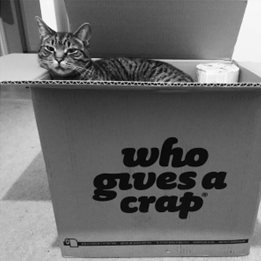Go old school
I love this category of eco-friendly alternatives! They can be so simple, solid and satisfying.
For many of the products we use today their original form was more environmentally friendly than the versions we have now. Now, I’m not saying that everything was better back in the day, but before things like plastic, disposables, mass production and pesticides, some materials and processes were more natural. A lot of things were also made to last or be repaired. Quality was prized over quantity. So, for some alternatives, we just need to go back to what generations before us used.
Soap
A bar of soap is wonderful in its simplicity and can be pretty cheap!
Cost: £1 - £14 (depending how fancy you like your soap)
Duration: 2-3 months
I hated soap for years because of my sensitive skin and nose. I didn’t like the strong smells or the way it left a sticky film on me. Now I love my soaps. I have found ones that are natural and therefore have a great gentle smell and they don’t leave any residue on my skin (examples of these in above picture).
A bar of soap can serve as an alternative to any cleansing product that would normally come in a plastic bottle. It’s an easy way to cut down on packaging or even cut it out altogether if you buy loose from a zero-waste shop.
You can also get the following in bar form:
Shampoo
Conditioner
Facial cleanser
Hand soap (ditch the anti-bac pumps - not good for the environment or your health)
Dishwashing soap
Bathroom or kitchen cleaning soap
Toilet paper wrapped in paper
When toilet paper was first produced it came wrapped in paper not plastic. This option is still available today and saves a lot of plastic packaging waste. My favourite brand as you will probably already know is Who Gives A Crap because, well, they give a crap!
My in-house model, Tigger, who doesn’t really give a crap but is cute
Cost: £28 for 24 rolls (£0.32/100sht)
Duration: For our household of 2 it’s about 3 months
We get the larger pack of 48 rolls for £44 so it works out even cheaper at £0.25/100sht and means we only have to get a delivery every 6 months! Here’s some other reasons why I love it:
Plastic free. Wrapped in paper and packed in box.
Made from recycled paper.
Subscription service that is delivered to your door.
Donate 50% of profits to Water Aid (a charity that builds toilets and improves sanitation in the developing world)
BCorp certified (the B Corp certification is given to corporations that meet high standards of social and environmental performance, transparency, and accountability)
Due to the double length rolls (370 sheets), and bulk buying, it works out about the same as your average toilet paper. Which is amazing as your are paying for way more than just toilet paper. You are helping the planet and other people.
Wax Wraps
Wax wraps are so much prettier than clingfilm and again this alternative is healthier for you and the environment. They are usually made from cotton cloth and bees wax. They can be composted or be repurposed as fire lighters when they reach the end of their usefulness.
Cost: £10 for two combo pack (30x30cm & 20x20cm as in picture above)
£22 for 1m roll (35x100cm) you can cut to whatever sizes you want
Duration: I’ve had mine for about 2 years and they are needing a bit of upkeep (re-waxing) but other than that they are great
This alternative is not as cheap or versatile as clingfilm, but wax wraps are safe to use on food, reusable, compostable and they last a long time therefore I think they are totally worth it.
Other old school alternatives to plastic wrap include:
Glass containers or jars
Waxed paper
Brown paper bags
Reusable cloth bags
Make an old school swap
Why not swap out one of your everyday household items for an old school version? Have a look at the things you use and ask yourself if the original design was more environmentally friendly than the modern one you have.
Alternatively, you could have a chat with your parents or grandparents. Ask them what they used to use and how they used to do things before plastic and other modern inventions. We can learn a lot from previous generations practices – just because something is new and innovative doesn’t make it automatically better.
That being said - next time we will be looking at innovative products and designs that are better for the environment and could save you money!



